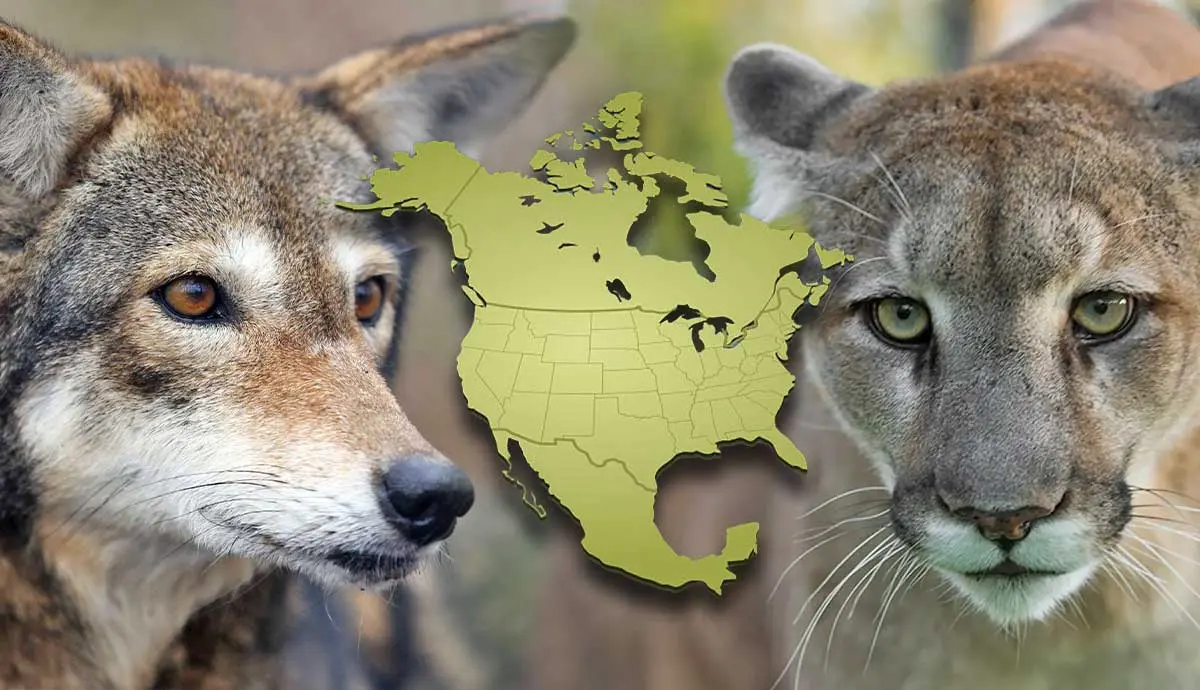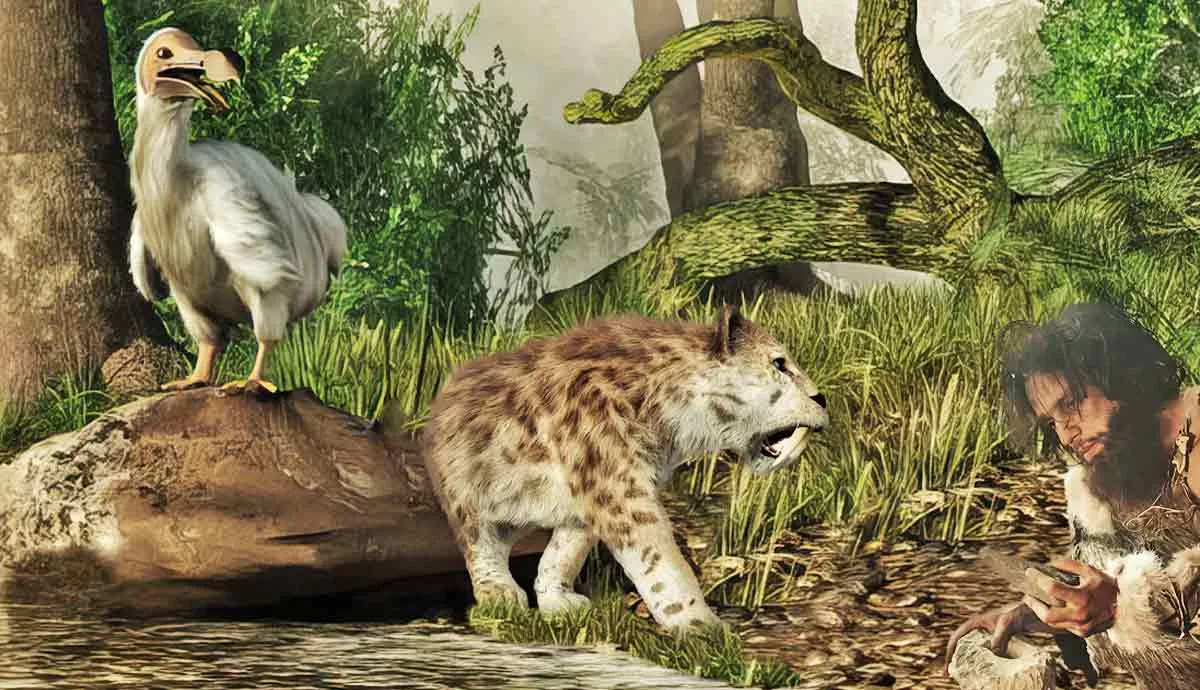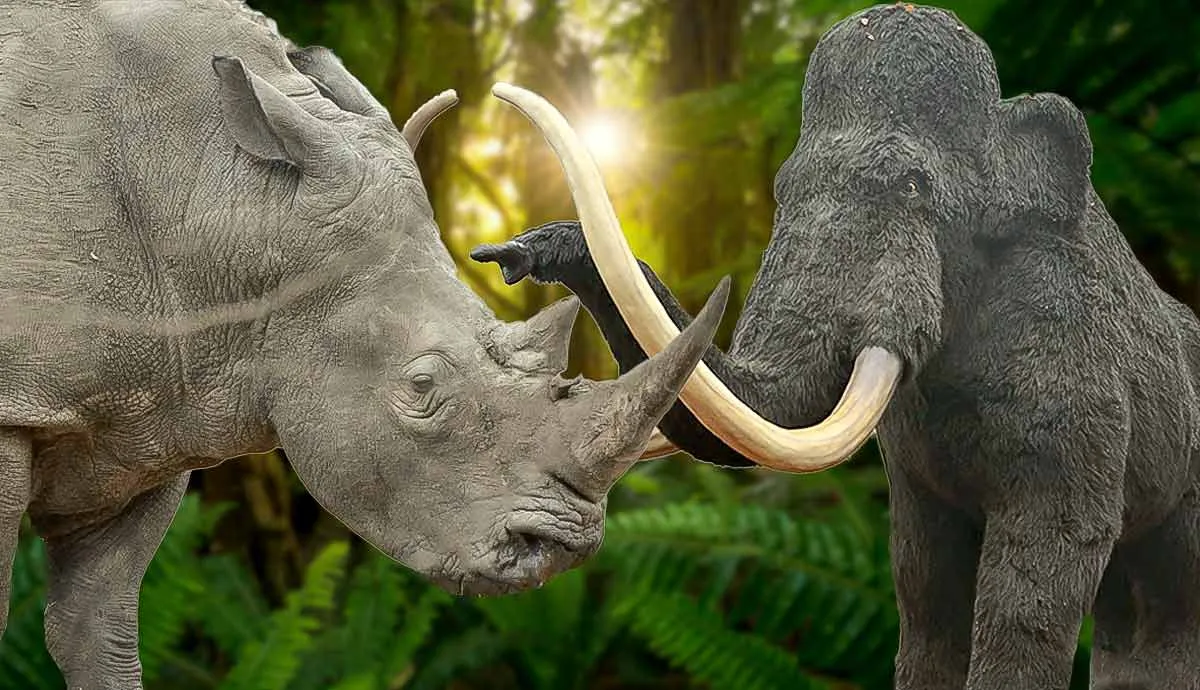North America is the third largest continent in the world. It lies between the Arctic Circle and the Tropic of Cancer. It is full of many diverse animals and plants. However, each year, more and more become endangered due to loss of habitat, hunting, and pollution.
The following species are endangered and need our protection: the Red Wolf, Florida Panther, Black Footed Ferret, California Condor, and the San Joaquin Kit Fox.
Red Wolf

The 45-80 pound Red wolf historically lived from southeastern Texas to central Pennsylvania. They are an adaptive species, finding their prey of small mammals like raccoons, rabbits, rodents, and white-tailed deer in a variety of habitats.
These brown-furred carnivores mate for life, breeding only once a year from January through March. They stick in packs of 5 to 8 and live as a close family unit. Red wolves live in concealed dens where they raise their litter of about 9 puppies at a time.
Today, you can only find around 75-100 remaining red wolves in eastern North Carolina’s Albemarle Peninsula. This was due to a conservation effort by the U.S. in the 1970s. At this point, the red wolf was declared extinct in the wild. The US Fish and Wildlife Service took the 14 red wolves they could find and released them onto this peninsula.
Red wolves are still in danger. Habitat loss and competition with coyotes who compete with them for resources make it hard for these slightly smaller wolves to establish a secure habitat. These animals still have a long way to go.
Florida Panther
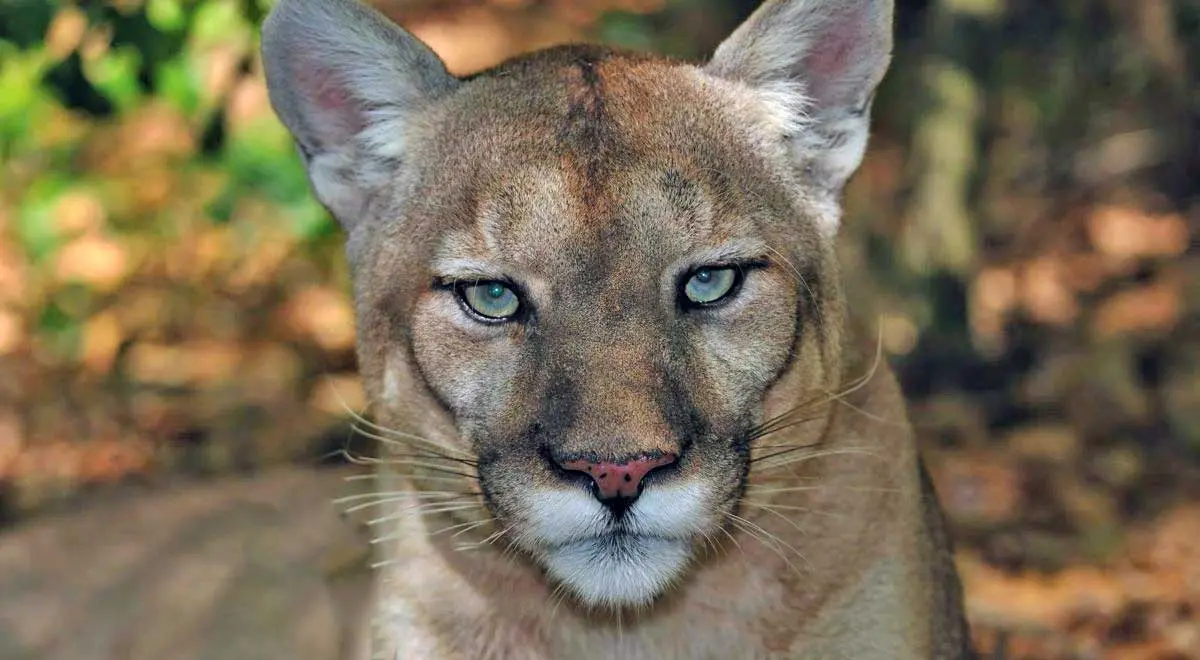
This subspecies of the mountain lion is a large, tan cat with a whitish-gray belly and chest. This is the only subspecies of mountain lion still alive today in the eastern United States.
They have black markings on their tails, ears, and nose. These big cats can be up to 7 feet long. These creatures used to roam and hunt from Florida to Louisiana.
These carnivorous cats eat feral hogs, raccoons, reptiles, birds, and white-tailed deer. They are very territorial and only pair up to mate and raise young. They mate between November and March. The female gives birth to about 1-3 kittens at a time.
They made the endangered species list in 1973 when their population was as low as 20-30 Florida Panthers remaining. This low population caused inbreeding which gives these big cats a characteristic kinked tail and cowlick.
The main causes of their endangerment are pollution, habitat loss, and diseases. Many people fear these large cats, making it hard for them to be reintroduced to new areas.
Black Footed Ferret
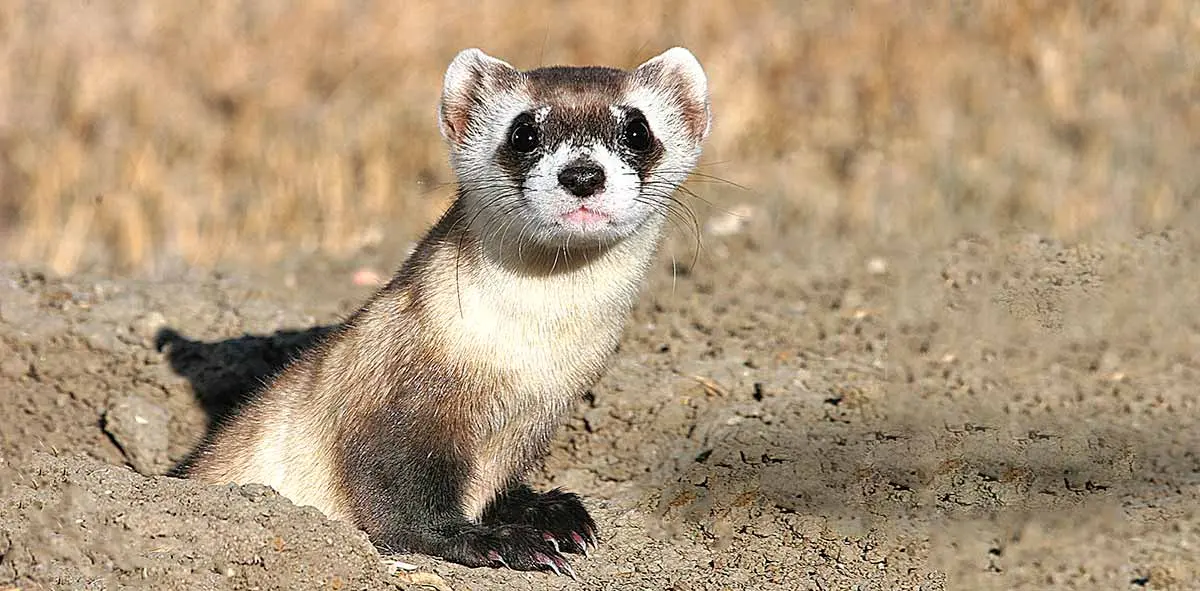
These adorable ferrets are the only native ferret species in North America. They used to live across the western plains from Canada to northern Mexico, but now they are endangered. In fact, until recently, they were thought to be extinct.
This small, 18-24-inch-long ferrets have tan bodies and black feet and facemasks. They have large claws for digging and large eyes and ears. They communicate with a series of loud chatters, hisses, and whimpering sounds. They eat lots of prairie dogs, mice, rats, ground squirrels, rabbits, and birds.
The Black Footed Ferret is a solitary creature, only coming together for reproduction. They have approximately 9-10 kits per litter.
In the late 1980s, the last remaining colony of 18 Black-Footed Ferrets was found in the wild. They were captured and kept in captivity to help breed and reintroduce this endangered mammal. Due to this program, there are now 3,000 of these ferrets in the wild.
Their main threat is habitat loss and disease.
California Condor
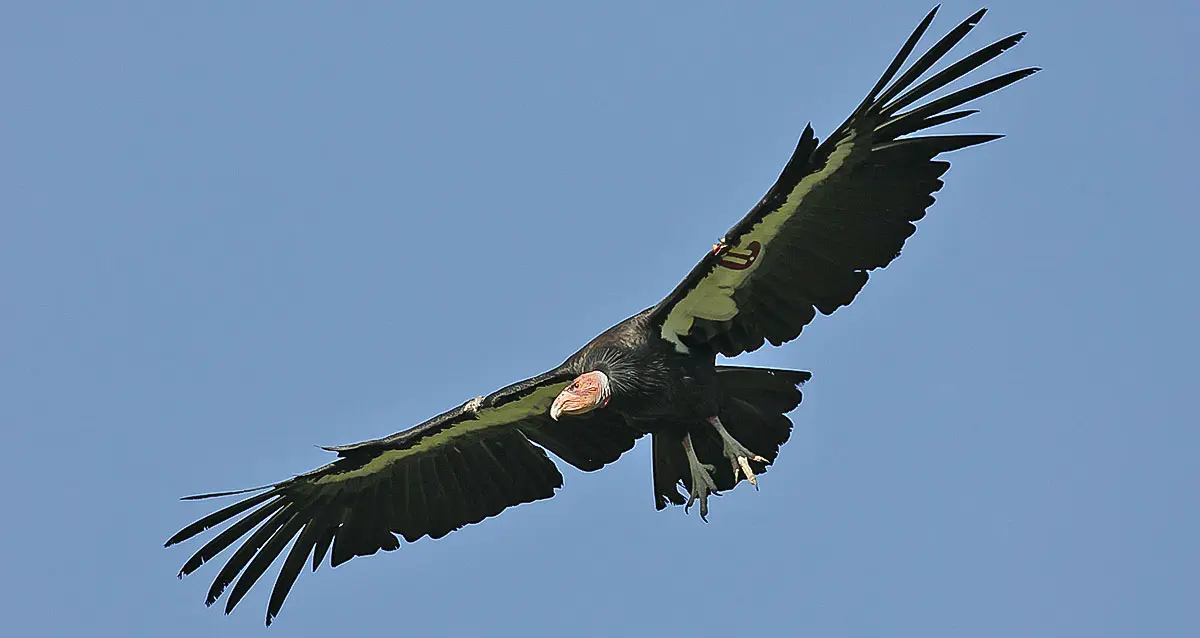
California Condors have been around since the Pleistocene period. That’s 40,000 years ago! These large birds are scavengers that can survive 1-2 weeks without eating. These birds can store up to 3 pounds of meat in their crop for later.
These condors live in central California around the Grand Canyon area. They nest on cliffs and travel far and wide in search of food.
They came to the brink of extinction in the 1980s when only 22 condors remained. Lead poisoning is the main threat to their longevity.
Conservation efforts brought the number of California Condors up to around 300+ birds, but they are still struggling to survive in our modern world.
San Joaquin Kit Fox
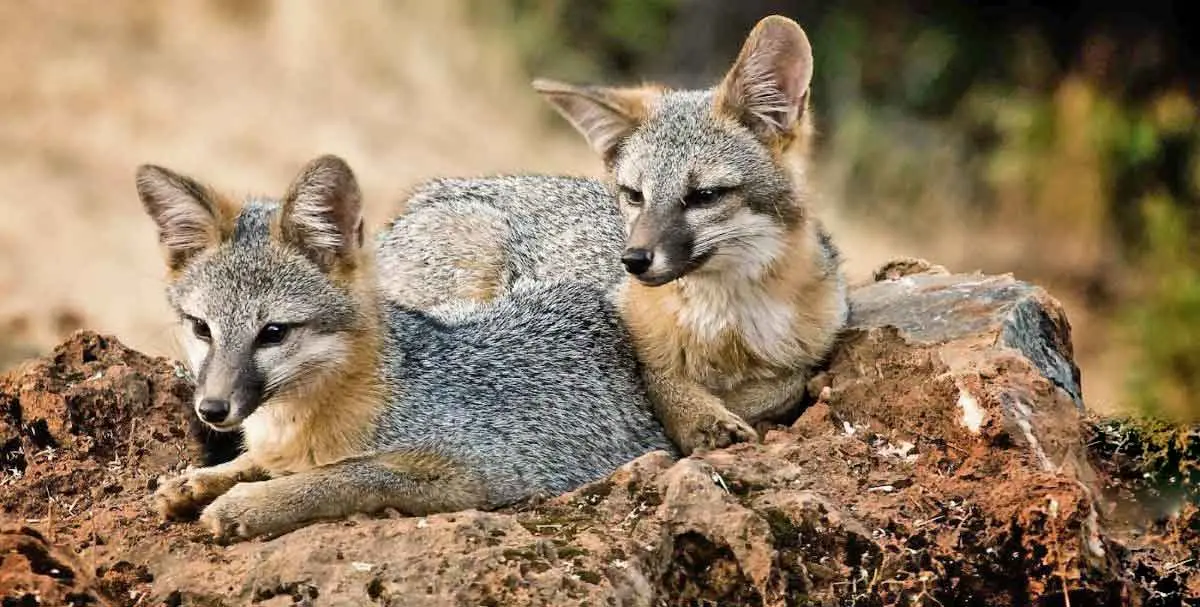
This 5-pound, small, bushy-tailed tan kit fox is native to the valley floor and foothills of the San Joaquin Valley in California.
These foxes live in the deserts and grasslands, hunting at night and sleeping in dens during the day. They eat kangaroo rats, white-footed mice, pocket mice, ground squirrels, rabbits, and birds.
They became endangered due to oil exploration and spills. Many of their habitats also were lost due to agriculture and construction. Diseases such as rabies, parvovirus, and mange plague these kit foxes. Wildfires in the dry California valleys also destroy their homes.
Conclusion

These unique, beautiful North American species could be no more without help from conservation efforts. They have made many strides in recent years, but there is much more that can be done to protect these vulnerable species. It’s important to remember to support our local conservation efforts.
